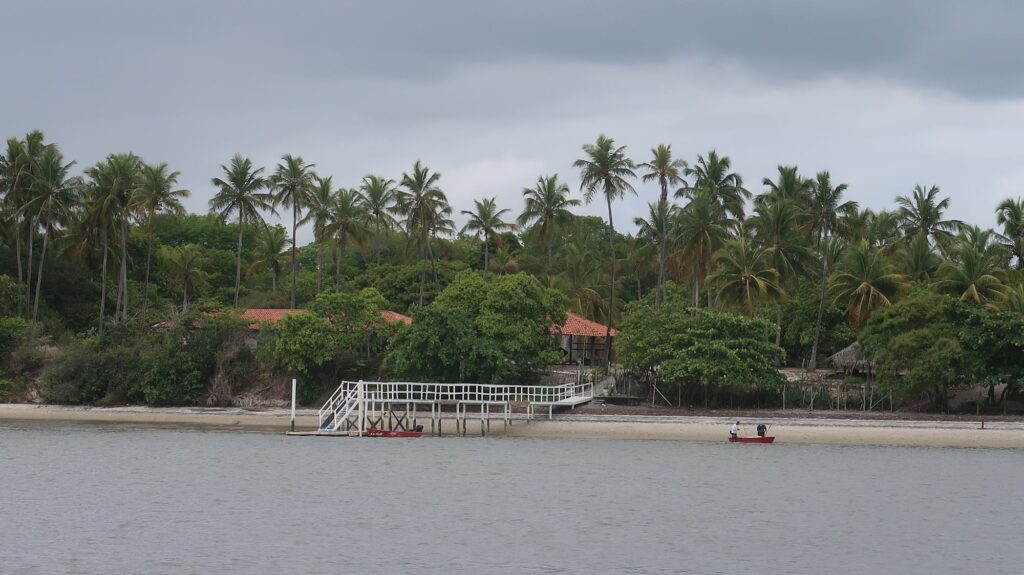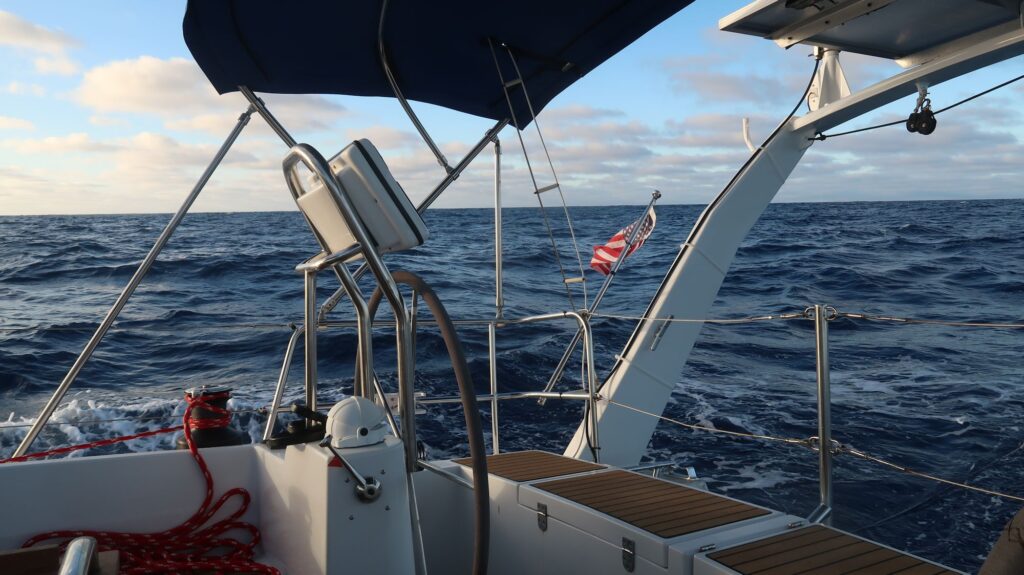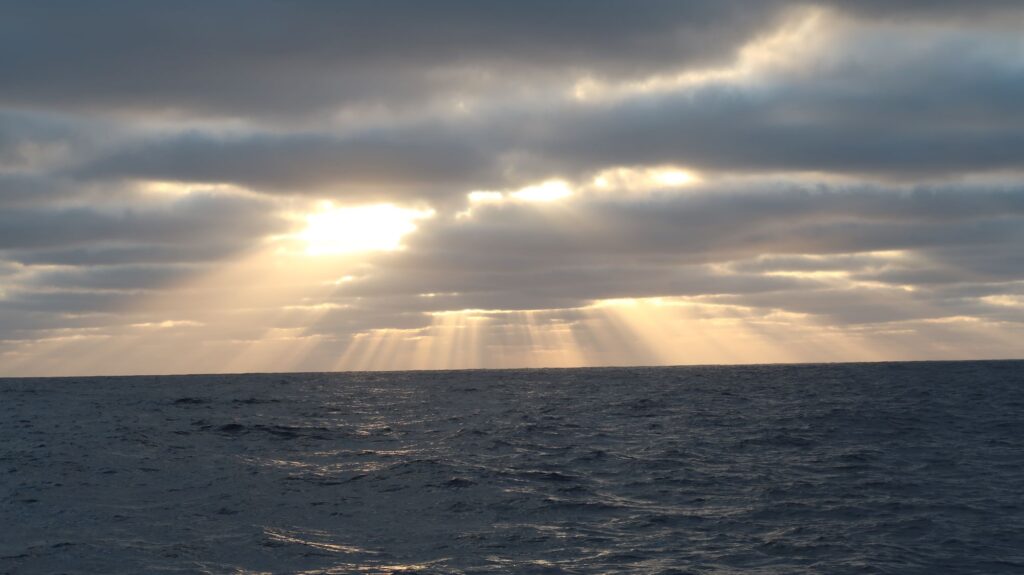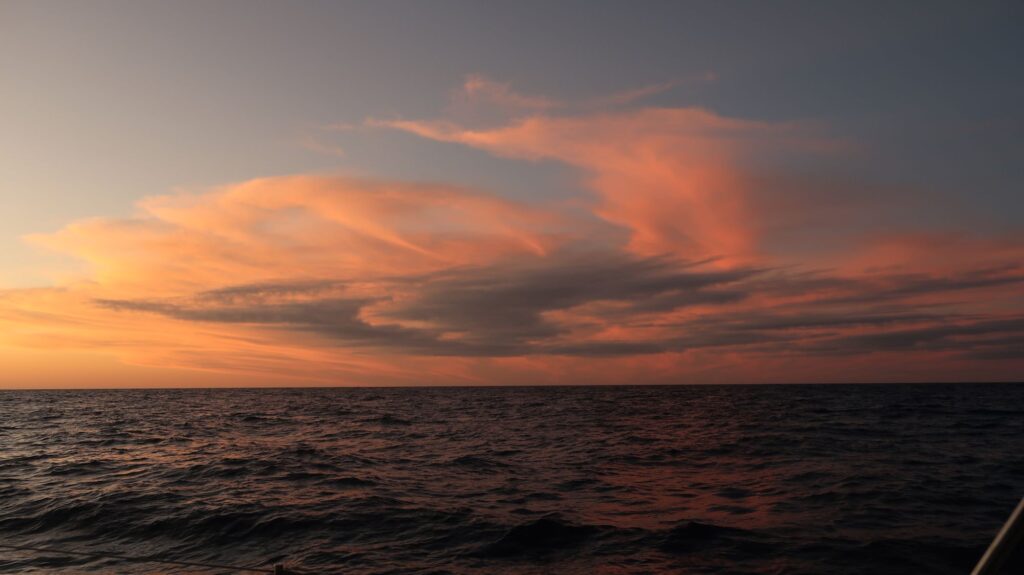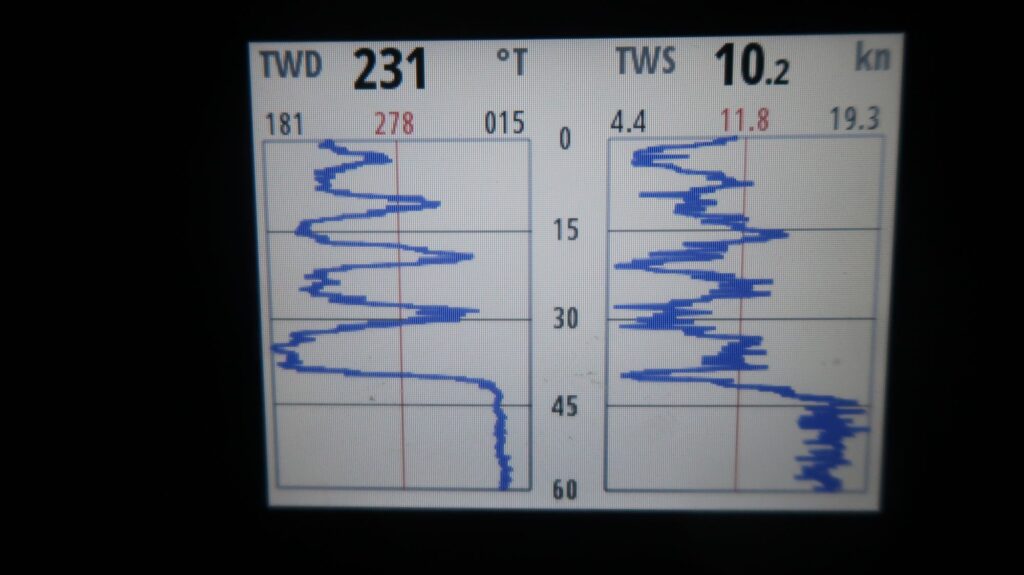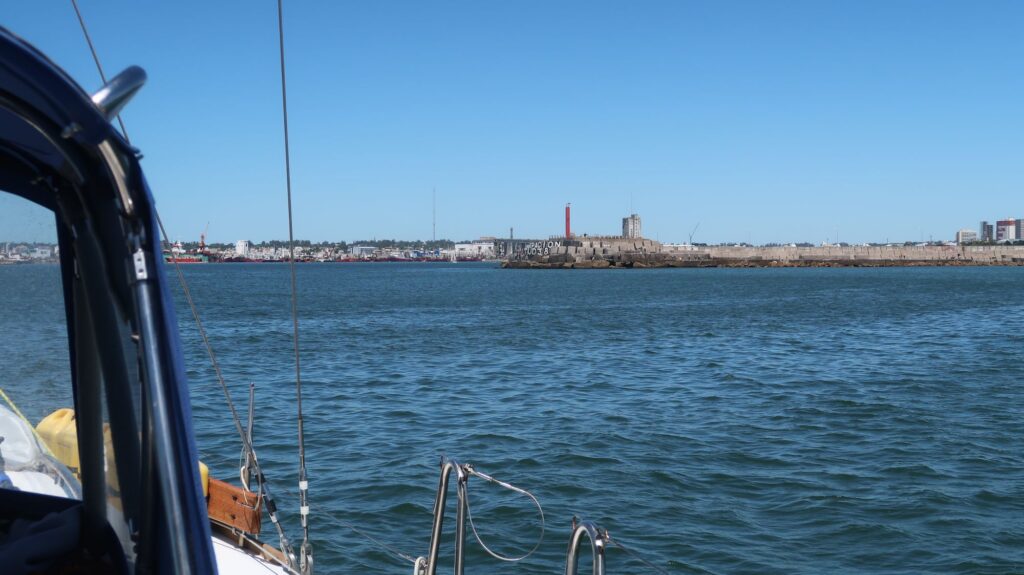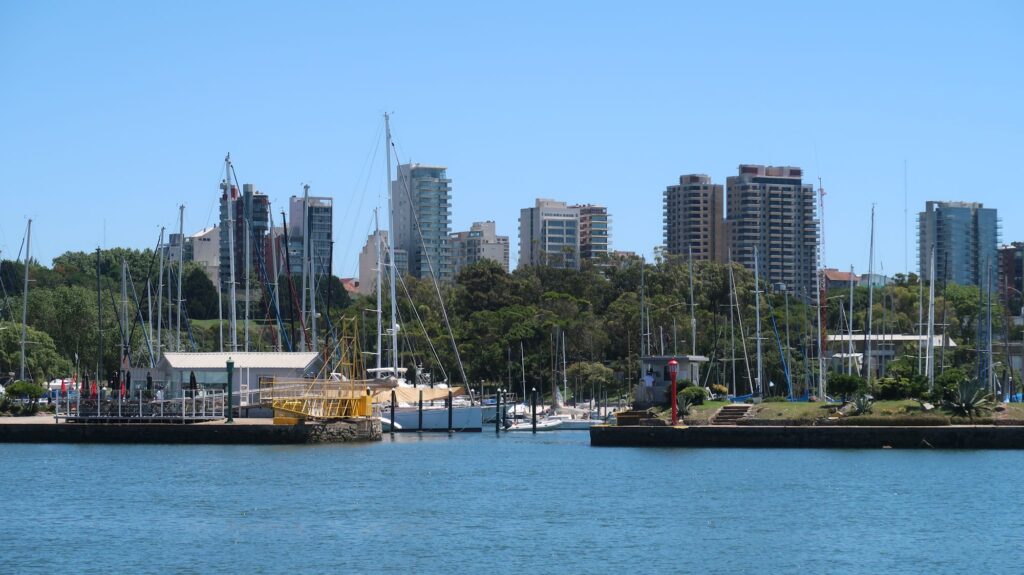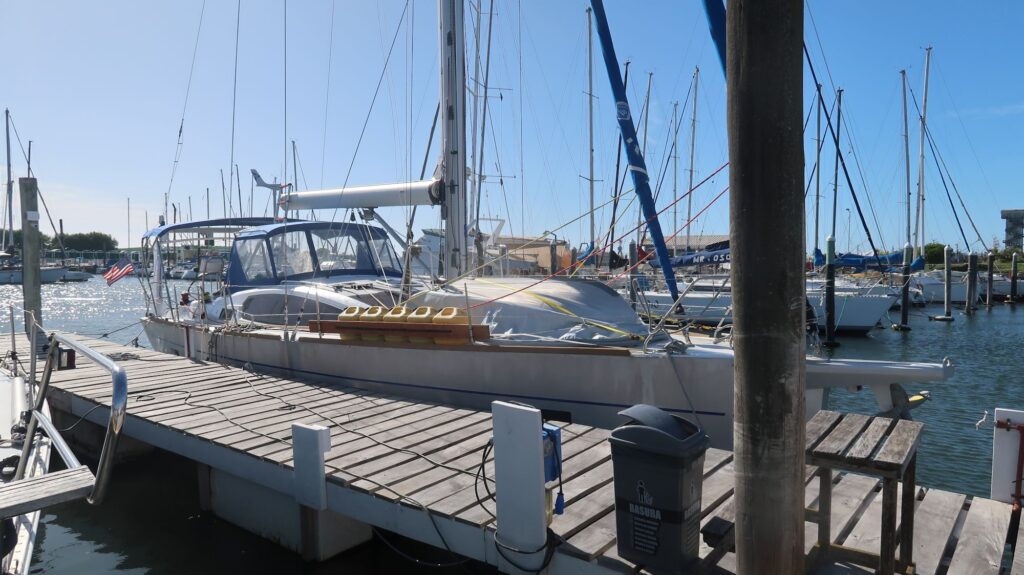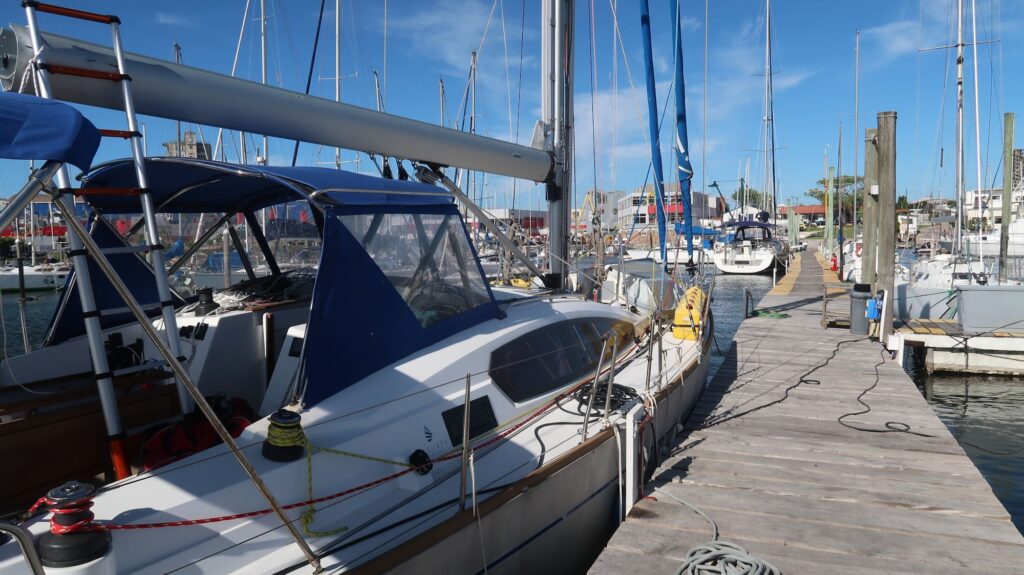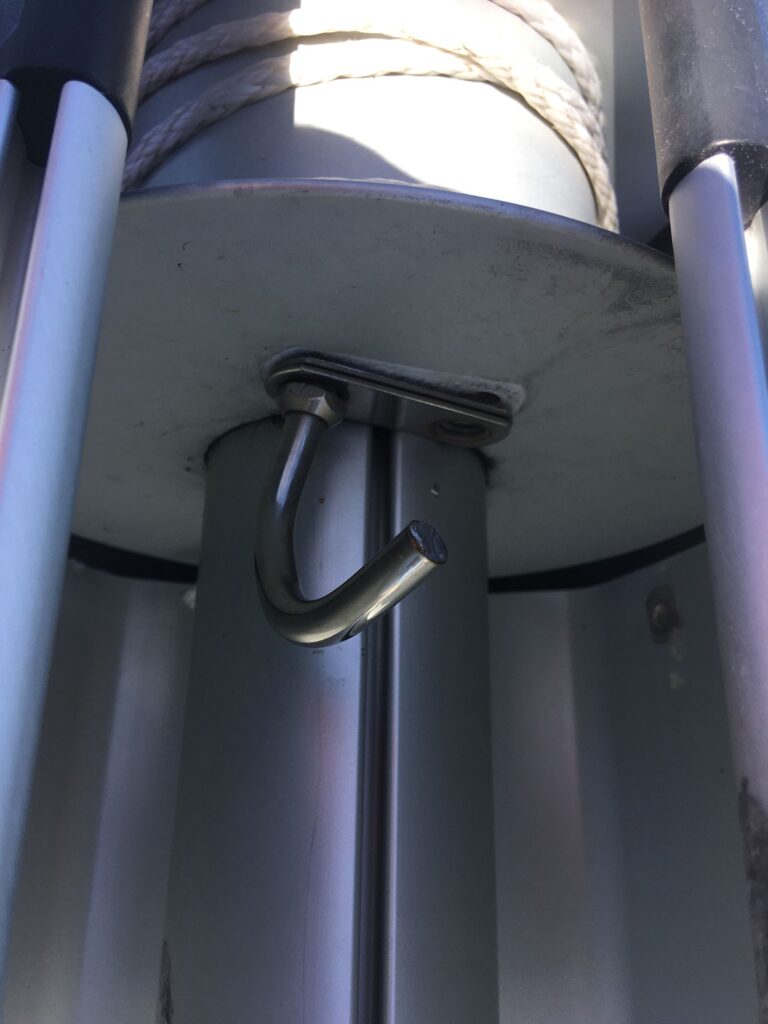I left Mar del Plata on Decenber 22, about noon, local time. For the first few days I had great following winds and made good progress but eventually the wind shifted to the south and I was sailing into a headwind trying to tack back and forth across it. This process was aggravated by a strong counter current it took me a more than a day to figure out. At first it showed up as a north-setting current so I thought it might be an offshoot of the well-known Falklands current, although I was really too far west to encounter that. When I would try a port tack, sailing to the southwest the current would push me north so my actual course over the ground was almost due west – almost no progress south. I tried to make the best of this but it was very frustrating. Some hours later I noticed the current rotating to an east set, then south set, then start rotating bach to north set. Very weird. After watching this happen over 24 hours I concluded the current was following the tide changes, north set on ebb tide. It never occurred to me that tidal currents flowing away from the land would turn and flow north and south along the coast. That said, I started this voyage not knowing much about how currents work so I’m getting a live fire education. I’m surprised the 2 guidebooks I have for sailing this coast, although discussing currents, don’t mention this phenomenon.
Headwinds and currents continued to impede my progress south over the next several days. Watching the weather forecasts for the crossing frim Puerto Deseado to Bahia Thetis on the eastern tip of the island of Tierra del Fuego, I decided to anchor for a day so I could make the crossing in a little better weather window. I anchored in Bahia Oso Marino, about 10 nm south of Puerto Deseado. The port itself, located near the mouth of a river, has a complicated entry with high tidal currents and really no good facilities to accommodate visiting yachts. At Oso Marino I had the entire bay to myself. The holding in sand for the anchor was great, it needed to be, because I had 20-30 kt winds blowing through from nearly all directions. I’m glad I have an anchor that’s good at resetting itself.
While anchored, I poured the remaining diesel from my jerry cans into the main tank, something that’s almost impossible to do while at sea unless the water is dead calm.
Leaving Oso Marino at around 10 in the morning local time, I was contacted by the Prefectura Naval in Puerto Deseado who wanted to know my intentions, where I was going , etc. I gave him the details he asked for, and at his request, agreed to add his email address to the daily position report emails I have been sending to the Prefectura in Mar del Plata. All yachts transiting Argentine waters are required to do this. A good thing, I think, that they’re keeping track of where these boats are in case of a problem.
Since leaving Oso Marino I continue to work my way south into light and sometimes contrary winds. The forecasts have not been particularly accurate. I’m very much trying to avoid the very strong westerly wind storms that are common in this part of Argentina, the Patagonian coast. For seversl days now I have been sailing across the infamous “Roaring 40’s”, 40-50 degrees south latitude. Tomorrow, likely, I pass south of 50 degrees south latitude, into the “Furious 50’s”. They have these descriptive names for a reason. I’m trying to avoid experiencing the reason first hand. I may chose to anchor again around the east entrance to the Magellan Strait to wait for more moderate winds and seas to cross to Bahia Thetis.
I have had more equipment issues since leaving Mar del Plata. One of the deck-mounted blocks (pulleys) that controls the sheet(control line) for the mainsail failed. I had one spare so I was able to get going again, but it was my only spare. My brother Jim, who is coming to Puerto Williams in January to join an Antarctica cruise, will bring me a couple of spare blocks and the replacement u-bolt for the boom.
More seriously, I suppose, is that I lost 4 of my diesel jerry cans overboard in what was a really freak episode. I was tacking the boat, moving the genoa from port to starboard. During this process for a time the sail and sheets a violently flapping in the wind as the bow of the boat turns through the wind and before I can winch in the sheet. While the sheet was flying it caught under the end of 2×6” board where the jerry cans were attached. The board itself was attached to stanchions with heavy duty cable ties that had held fine during this voyage, included through some very rough seas. Before I could even react, the flying sheet, with the genoa pulling on it, caught under the end of the board and quickly yanked it right off the stanchion, breaking the cable ties, leaving that end of the board hanging over the side. The seas were rough but I went forward to try to grab the board, with the sheet still yanking on it, to try to pull it back on board. It was no use. The forces from sheet and the weight of the board with 3 full 20 liter jerry cans attached was too much for me to drag back aboard. I had to let it fall over the side where in a half a minute the weight and heavy seas broke the cable ties holding the other end of the board and it fell away, certain to sink. I didn’t think that if I turned the boat around I had a realistic chance to recover them, especially with the rough seas. Surprisingly, one of the 3 full jerry cans somehow detached itself from the board and stayed on deck. I was able to grab that one and bring it into the cockpit so the total loss was 4 jerry cans and the mounting board. I’ll have 6 jerry cans for extra diesel going forward, instead of 10, unless I can find some more jerry cans in Puerto Williams.
While at anchor in Oso Marino, inspecting the boat, I discovered the furling line for the genoa had chafed almost all the way through. If it had broken while at sea the genoa would have unfurled with no way to bring it back other than release the halyard and try to lower the sail to the deck which would have been extremely difficult at sea. I replaced the furling line with about the same diameter which should be adequate.
The boat is as ready as I can make it for the crossing to Bahia Thetis which I think will be the roughest passage so far.
